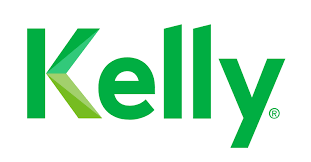|
At the Chamber's Business Advocacy Committee meeting on February 8, 2021, the County of Ventura's Public Information Officer Ashley Bautista and Economic Vitality Manager Gloria Martinez provided updates on COVID vaccines, testing and more. They encouraged the business community to visit the Business section on vcrecovers.org for comprehensive information on outbreak reporting, financial assistance, mobile onsite testing and more.
Martinez also shared strategies for employers regarding vaccinations and their workers. Designate a Vaccination Lead for the Company
Educate Your Employees About Vaccination Distribution
Make it Easier for Employees to Be Vaccinated
With 2020 in the rearview mirror, it's time to reflect on the events and lessons the year has had for all of us. Of course, it's likely that you have some desire to forget rather than reflect. Tempting as that may be, the end of 2020 won't bring the end of COVID or economic instability. You never know when another event like this might occur in the future. Learning from past events is one of the keys to future success.
Lessons of the COVID Crisis Just as COVID has shaken every aspect of day-to-day life, it has had a thorough impact on business operations. Public health and workplace accommodations were the most immediately need. Next, businesses needed to rapidly adjust to completely different structures to continue operations in the modern world. Lastly, it became apparent that businesses need to have more flexibility and alternatives in their supply chains. Change the Outlook on Supply Chains At the onset of the COVID crisis, manufacturers faced sudden spikes in demand for various goods and shutdowns among suppliers. One of the more memorable results of this was the nationwide toilet paper shortage. While that example might seem funny in retrospect, it speaks to a situation that created countless crises among distributors. In the past, a business might simply discard a supplier that shuts down and seek out alternatives. However, the expansive impact of the pandemic meant there were no alternatives. This speaks to two lessons that businesses must learn from 2020. On the one hand, they need to have protocols and preparation for dealing with sudden spikes in demand. Such protocols are versatile and will help in virtually any disaster situation. On the other, businesses must forge closer ties with their suppliers and work to manage risk together. Better understanding between suppliers and distributors will give businesses much-needed dynamism in the face of the unexpected. Digitizing is the Future, and the Future is Now Since the turn of the century, businesses have gradually been digitizing their operations. The pandemic forced these changes to move at a much faster tempo, with businesses revamping their online presence and creating all-digital workflows. Not only have these changes empowered businesses to operate during the pandemic, but they also made workflows more efficient and flexible. If your business hasn't already digitized its operations as much as possible, this should be a top priority moving forward. Even with the vaccine rollout, the benefits of online operations aren't going away. Digitizing will help your business cope with the continuing pandemic and boost efficiency into the future. Maintain Contingency Plans It's impossible to expect when forces beyond our control will dramatically change the business situation. Economic crashes, pandemics, natural disasters; COVID has underlined the need to be ready for catastrophe. Dwight Eisenhower once effectively said that plans are worthless, and planning is priceless. While it's impossible to plan for every possible crisis, the very act of planning for a crisis will provide guidance during the critical early days of any such event. Are you ready for some COVID-related stats that won't spin you into anxiety or depression? We are too!
At the Chamber, we've been watching some of the emerging trends related to business -- from local to global. We decided to share some of the more interesting findings in this brief round-up. New Business Boom According to the US Census Bureau, over 111,000 applications to start a new business were filed during the week of August 10th. That's a 69% increase over the same week a year ago. And it's no fluke: 113,000+ filed the week before. In fact, third quarter new business tax IDs have surpassed second quarter numbers in just the first eight weeks. Saving for a Rainy Day The average savings rate in April jumped to a record 32%, up from an average of 8%. The average savings rate in May was also significantly higher than average at 23% -- and it's remained higher than average since. Business Growth in Online Sales Nationwide there has been a 49% increase in online retail sales. Much of this increase has, of course, gone to the big internet players such as Amazon but not all. While some view Amazon as a retail giant, over two million small businesses in the US view Amazon as a sales and delivery channel, along with sites like Etsy, Ebay and others. Home Sales Climb Nationwide Realtor.com reports that July real estate prices were up 8.5% over July 2019. And the National Association of Realtors (NAR) shared that July 2020 home sales were up 24.7 percent from the month before. July was "among the strongest (months) the housing market has ever seen." These home price increases are partly due to a shrinking supply of houses on the market (down 32.6 percent nationwide), low interest rates and pent-up demand from potential home buyers putting off house hunting during the uncertain spring season. Speaking of demand, the NAR noted that home ownership, in general, is at a reported 12-year high. On August 5, 2020, the Economic Development Collaborative (EDC) secured $2.45M in new loan capital from the U.S. Department of Commerce/Economic Development Administration's CARES Act Fund to help support Ventura County businesses negatively impacted by COVID-19. Set to be allocated as an EDC Revolving Loan Fund (RFL) over the next 24-months, qualifying Ventura County businesses can apply to receive between $10,000 to $250,000 of working capital.
With this new $2.45M award, the EDC now controls $5M total in loan capital set for distribution specifically in Ventura County. Fixed with a 4.2% interest rate, all RFL recipients are reasonably expected to repay in full within 7 years. "The Economic Development Administration (EDA) is one of the EDC's oldest partners," states Marvin Boateng, EDC Director of Lending. "We greatly appreciate their more than 24 years of continued financial support and are excited that this new grant will expand our opportunity to lend to small businesses within Ventura County. We know that many have been hard hit by COVID-19 and additional capital is a lifeline to businesses with limited cashflow." Ventura County businesses interested in learning more about or applying for an EDC loan are encouraged to contact Marven Boateng directly via email at [email protected] or phone at (805) 409-9156. The impact of COVID-19 will go well beyond the pandemic itself, with serious effects expected on the global economy as well as on people's lives. During periods of economic downturn, people's incomes are limited, and their spending habits change significantly. To stay afloat and retain customers, some businesses will choose to revise their prices and fees downwards. Naturally, with the stiff competition that characterizes many markets, you may be tempted to follow suit. Even as you strive to make the right decisions for your business and customers, it would be important to understand the visible and hidden negative effects of lowering prices.
The negative effects of lowering prices The negative effects of lowering prices can be categorized into visible and hidden outcomes. The visible effects related to profits and sales volumes. While a good number of business owners think that lowering prices will help to drive sales, the move can lower your profits by a significant margin. Reduced profitability will have a huge negative impact, particularly on startups and small businesses. For any business to enjoy the same level of profitability after lowering prices, they will need to sell more products to customers. In a shrinking economy, it may be difficult to sell more than you used to do previously. Apart from the visible effects, the hidden ones can have a huge impact on your business. Cutting your prices may lead customers to believe that they will get lower quality from you. This notion could affect your reputation as a business that sells high- quality products or services. Another possible outcome is that long-term customers will feel that you have been overcharging them, a factor that could see you lose some of your current customers. In addition, customers who feel that they overpaid will not refer others to your business. You may also not end up attracting more new customers if your competition lowers their prices as well since things will still be the same. With these effects, adjusting your prices downwards could be counterproductive, effectively dealing a blow to your efforts to drum up business. As such, lowering prices during a recession would not be a smart strategy. What you should consider doing To help you get through the tough times, there are several steps that you can consider taking. With declining demand, you will need to come up with smart and innovative ways of keeping your business going. If you only handled big projects in the past, it would be time to consider taking on smaller projects with smaller budgets. Taking on smaller projects will not only keep you going but could also earn you new customers. Another option would be to provide free consultations while maintaining the prices of your products and services at the same level. Since the price is defined by the value that customer enjoy, you can also choose to increase price and value simultaneously. However, this will require that you pick the right time and decide how much to change the prices. In the end, you will want to make changes while ensuring you encounter the least resistance from your customers. In the long run, the pandemic will ease off, and the global economy will rebound. However, adjusting prices can have long-term effects that will take a long time to rectify. Provided you deliver value to your customers, we recommend that you charge what you believe is a fair price. No one has a crystal ball to see when businesses will start to open up again, but smart business owners and marketers are already planning for what lies ahead. If you wait until you get the go-ahead to open up to start to plan your business comeback, you may find all your competitors racing past you at the starting line.
As you make the shift from survival mode to comeback mode, take a look at these tips which we've pulled together to help you hit your mark, get set, and go. 1. Stay in Touch with Your Employees No business thrives without a dedicated workforce who bring their skills and passion to the job every day. You have probably already been keeping your whole team up to date on your own company's situation, and as you prepare for your comeback, you need to confirm your concern for them. Be transparent with all developments, and let them know your plans as they come into shape. 2. Plan for Interaction with Your Customers All brick-and-mortar businesses are likely to face new requirements when they reopen. While you definitely need to stay up to date on what your state, county, and city ask of you, you also need to make sure your employees are fully informed. Your staff may have to wear masks and gloves for a while, they may have to practice social distancing, and you may have other requirements you insist on for your customers' health and safety. Put your expectations in writing to make sure everyone's operating on the same page. 3. Get Your Finances in Order If your business has been closed for a matter of weeks or even months, your balance sheet may not be in the best of health. Before you open up, take a long, measured look at your financials to determine how to approach the new normal. You may need to apply for a business loan to pay bills that have been piling up or to replace inventory. You also need to estimate just how much business you expect to do immediately if, for example, you have to limit the number of customers who enter your establishment and you experience hitches in your cash flow. Working with your banker and your accountant can help you make wise decisions while you have time to consider all your options. 4. Plan to Remain Flexible Even when your local governments okay opening up again, you may not want to leap feet first into the fray. Check with your insurance company for guidance, especially if customers or clients enter your workplace. Social distancing guidelines are likely to remain in effect in many locations, so you may want to allow staff to continue to work from home — a situation which requires a great deal of trust between employer and employee. If you can create contingency plans now, you'll provide yourself with more options once it's time for your comeback. We believe in the ability of our community to bounce back from tough times and to adapt to new environments, so we are optimistic about the future for our region. If you're ready to pivot and adapt as you begin your comeback, you should find your business in a position of leadership again. On Saturday, the 4th of July, President Trump signed legislation that extends the deadline for businesses to apply for aid under the Paycheck Protection Program (PPP).
The bill extends the deadline for businesses to apply for PPP loans until Aug. 8. The program, set up to assist businesses impacted by closures related to the coronavirus pandemic, had expired on June 30 with roughly $130 billion left unused. The Senate in a surprise passed the legislation by unanimous consent late on June 30, extending the program hours before it was set to expire. The House took up the Senate bill and passed it by unanimous consent on July 1, sending it to Trump’s desk. The lending program was established by the $2 trillion stimulus package negotiated by the White House and congressional leaders and signed into law at the end of March. The program experienced a chaotic rollout but has been popular, with the Small Business Administration lending more than $520 billion in emergency loans to more than 4.8 million small businesses. The extension comes as lawmakers on Capitol Hill prepare for negotiations over the next round of coronavirus stimulus. House Democrats passed a $3 trillion stimulus bill in May that included aid for state and local governments and another round of $1,200 direct payments to Americans, but the measure gained little traction in the GOP-controlled Senate. COVID-19 has created unprecedented challenges for small and medium-sized business owners and managers. While we're still learning what the true economic fallout of this pandemic will be, one thing is clear: companies that want to survive, and even thrive, need to double-down on efforts to manage cash flow. That means finding ways to deal with big-ticket expenses such as rent, contracted services and wholesale orders.
Should you try to negotiate a rent reduction? One of the obvious strategies in light of the pandemic-related restrictions on businesses is to try to negotiate a rent reduction. This provides immediate financial relief, giving you time to reconfigure your business in a way that meets the current economic realities. When deciding whether to seek a rent reduction or rent deferral from your commercial landlord, consider the following: Who owns your building? Is it a private investor, a property developer or a commercial investment firm? Understanding the short and long-term goals of your landlord will help you know whether they're likely to accept a reduced rent or rent deferral arrangement. What has your relationship been like with your landlord? If you're a good tenant with a positive tenant-landlord relationship, chances are good your landlord will want to work with you. On the other hand, if the relationship has been rocky, don't be surprised if your landlord uses COVID as an opportunity to terminate your tenancy. What are your long-term business plans? Even if you're unable to pay your full rent right now, you may be able to negotiate reduced or deferred lease payments with your landlord in exchange for extending your lease. From the perspective of the landlord this may be a better option than loosing you as a tenant, which means they'll have to try to recruit another tenant — that's not something most landlords want to do during a recession. During the recession of the 1980s, commercial property vacancies nationwide skyrocketed from 4.9% to a staggering 18.9%, so there's good reason for your landlord to want to retain their existing tenants. Can you enter into an income-sharing agreement? Rather than thinking of your landlord-tenant relationship as an us-vs-them situation, consider proposing an income-sharing agreement. This arrangement involves paying a percentage of gross revenues rather than a set rental rate, and it's commonly used in the agricultural industry where the landowner crop shares with the tenant farmer. Not only can this type of agreement help you stay in business, but it can also align the goals of all parties involved. What about vendors?Rent or lease payments aren't the only big-ticket expense that many businesses can't afford during COVID-19 — a number of companies are unable to meet their contractual obligations to their vendors. Whether or not you should try to renegotiate vendor contracts depends on a number of factors, including if your contract contains a Force Majeure clause. A Force Majeure is an extraordinary event or set of unforeseen circumstances that prevent one or more parties to a contract from fulfilling their contractual obligations. If the right conditions exist, the contract will be temporary suspended for the duration of the event that triggered the Force Majeure clause, and in some cases, one or more parties may be entitled to compensation. Even if your contracts don't contain a Force Majeure clause, you should be proactive by starting a conversation with your vendors about how COVID-19 has impacted your business. Given the global nature of this crisis, everyone has been impacted, so chances are good your vendors will be open to working out a plan that is viable for everyone involved. As more Ventura businesses reopen or prepare to reopen, we've put together a list of where you can purchase personal protective equipment (PPE) to keep yourself, your team and your customers safe.
Products were in stock when this list was originally published; please call or order online to verify items are still available. Locally Sourced PPE: Oxnard Chamber of Commerce Members Amoretti (805) 983-2903 www.amoretti.com *Converted several of its manufacturing lines to produce hand sanitizer Fastsigns of Oxnard 2339 N. Oxnard Boulevard (Oxnard) (805) 278-7800 www.fastsigns.com/2034-oxnard-ca *protective shields Keene's Hardware 301 W Pleasant Valley Road (Oxnard) (805) 486-3016 *Facemasks and gloves Office Depot 4731 Telephone Road (Ventura) (805) 658-1582 www.officedepot.com *Facemasks, hand sanitizer, protective shields PrintPromoPlus by Safeguard 1000 Paseo Camarillo (Camarillo) (805) 486-9769 or (800) 786-4222 https://printpromoplus.com/personal-protection-equipment *masks, hand sanitizers and other personal protection items Staples 411 W. Esplanade Drive (Oxnard) (805) 988-1781 www.staples.com *Hand sanitizer, masks, gloves, shields Ventura Spirits 3891 N. Ventura Avenue (Ventura) (805) 232-4313 www.venturaspirits.com *Began producing hand sanitizer at the distillery; View pricing and details for bulk orders Walmart 2001 Rose Avenue (Oxnard) 2701 Saviers Road (Oxnard) www.walmart.com *Facemasks, hand sanitizer, gloves CONNECTING WITH CUSTOMERS From fast, flexible funding to collecting mobile payments, online ordering and e-invoicing, Heartland Payment Systems is keeping businesses updated with supportive resources to stay in business and connect with customers wherever they are. LEARN MORE>> CLEANING YOUR BUSINESS OR FACILITY JaniTek employee are tirelessly working at the frontlines of this pandemic. These behind-the-scenes heroes are responding to suspected and confirmed cases of COVID-19 exposure and are diligently following all CDC cleaning and disinfecting guidelines. JaniTek has increased service to all essential businesses that remain open and are dedicated to ensuring the health and safety of our community. Learn more at www.janitek.net or call them for a consultation at (805) 823-8296.  SERVPRO of Oxnard is being called on by numerous business and community leaders to perform the necessary bioremediation service to clean, disinfect and sanitize their properties. LEARN MORE>> HIRING FOR ESSENTIAL BUSINESSESBusinesses that are considered essential are busy and are hiring, such as those in food and agriculture, logistics, grocery stores, medical supplies and manufacturers/suppliers for defense. If you're looking for a job or if your company is hiring, please get in touch with one of these agencies. Please note that email or telephone communication is best as most offices are closed to walk-in visitors. FEEDING OUR COMMUNITY Community Action of Ventura County is providing food through its drive-thru food pantry program every Thursday from 12:30-3:30 pm (or until food runs out) at its facility located at 621 Richmond Avenue in Oxnard. Before COVID-19, it averaged between 100-120 households served; two weeks ago, 292 households picked up food. LEARN MORE>>  Food Share of Ventura County opened pop-up pantry distributions throughout the county. Distributions are limited to low-income families residing in the city of that distribution. An ID or proof of residence is required upon arrival. All distribution sites are drive-thru only for the safety of you and our staff. Food is limited to one box per household on a first come, first served basis. LEARN MORE>> CREATING ESSENTIAL SIGNS FOR ESSENTIAL BUSINESSESFrom social distancing decals and safety shields for employees, to letting customers know that you're open for business or doing curbside deliveries, it's more important than ever to communicate new processes and key information. Contact one of these Chamber members to create attention grabbing signage for your business. MAINTAINING SOCIAL DISTANCE IN YOUR OFFICE OR FACILITY Party Pleasers Event Rentals has tables and chairs available at discounted rates for maintaining social distancing requirements in the workplace. Contact them at www.partypleasers.com or call them at (805) 377-7368. We are humbled and proud to share some of the wonderful ways Chamber members are helping during the COVID-19 health emergency. If you're a member, contact us at [email protected] so we can add your story!
4th Way Fulfillment 4th Way Fulfillment was contracted by the CDC Foundation to assemble 80,000 kits for first responders containing hand sanitizer and hand soap that were donated by SC Johnson. The first shipment was delivered in early April to 47 fire stations in Seattle, Washington. Aera Energy
Amoretti Amoretti converted several of its manufacturing lines to create its very own Amoretti Hand Sanitizer. The team has been working with local government emergency services to distribute its initial hand sanitizer batches in bulk to first responders, hospitals (and other medical staff), and managed care facilities such as nursing homes and specialized care. If you are a first responder, work in healthcare, work for a business that is still open, work for a nonprofit, or are other critical personnel that is in need of hand sanitizer, please email them directly at [email protected] with your needs. Read the story>> California State University Channel islands CSUCI faculty, staff and students from several different academic programs have mobilized and fired up 3-D printers to print protective face shields. So far, 51 printers are humming away in University members’ garages, kitchens, bedrooms and dens across the region in an effort to help medical personnel protect themselves as they treat patients diagnosed with the COVID-19 virus. Read the release>> Charter College Due to COVID-19, over 200,000 appointments nationwide for blood donations with the Red Cross have been canceled. Charter College partnered with several organizations to run blood drives at its Oxnard location. Express Employment Professionals & Food Share of Ventura County Express Employment Professionals has teamed up with Food Share during this critical time – with a customized landing page to generate and track donations. The need today is monetary so that Food Share can purchase additional food to meet increased demand. Food Share Executives estimate they will need $2.5 Million in donations just to get through June 2020 (including the recent Ventura County Tax Dollar Aid). Express Pros has coordinated with Food Share for many years. They’ve hosted food drives generating thousands of pounds of non-perishable food items. In addition, they have held team building exercises on-site at Food Share to sort food for those in need. Donations to Food Share can be made by visiting www.foodshare.com/express OR by Texting EXPRESS to 41444. Food Share of Ventura County Food Share of Ventura County opened pop-up pantry distributions throughout the county. Distributions are limited to low-income families residing in the city of that distribution. An ID or proof of residence is required upon arrival. All distribution sites are drive-thru only for the safety of you and our staff. Food is limited to one box per household on a first come, first served basis. LEARN MORE>> No Limits for deaf children and Procter & Gamble Procter & Gamble has helped support No Limits for deaf children by donating toilet paper and paper towels so that they can provide care packages to its deaf/hard of hearing families. Oxnard Downtown Lions Club & Food Share of Ventura County Oxnard Downtown Lions Club are making a difference for Oxnard families affected by COVID-19 by raising money to benefit FOOD Share of Ventura County, which needs $2,200 a day to feed Oxnard. The Oxnard Downtown Lions Club has donated seed money of $2,200 to Feed Oxnard for a Day and asks for the community to join their cause to help FEED OXNARD FOR 30 DAYS. A $50 donation feeds 150 families but ANY contribution will help make an impact! Make sure your community and neighbors know they're not alone by sharing or donating to this much-needed GoFundMe campaign. They also teamed up with Tomas Cafe to deliver lunch to the doctors, nurses and staff in the emergency room at St. John's Regional Medical Center. View the Facebook post>> Port of Hueneme
SEED Beauty/Colour Pop While the company has ceased manufacturing operations, it has:
SoCalGas Southern California Gas Co. is donating $100,000 to American Red Cross of Central California to assist Central Coast, Santa Barbara, Ventura County and San Luis Obispo county residents in need during the coronavirus pandemic. The gift is part of SoCalGas’ $1 million donation to nonprofit organizations throughout its 12-county service area to support the region’s workforce, feed the hungry, and provide bill assistance to customers most affected by the coronavirus crisis. SoCalGas also launched “SoCalGas CAREs” for customers whose income may have recently changed due to COVID-19 or other reasons. The campaign aims to let customers know of their eligibility to qualify for SoCalGas’ assistance program, California Alternate Rates for Energy (CARE), saving them 20 percent on their monthly natural gas bills. Customers who have become recently unemployed or who are currently facing financial hardship due to the coronavirus pandemic or for other reasons are encouraged to visit socalgas.com/care, complete the quick online application and find out instantly if they qualify. United Way of Ventura County United Way of Ventura County launched the COVID-19 Rapid Response Homeless Care Kits campaign, which aims to provide essential hygiene supplies for our unsheltered veterans and individuals. These vital kits will be distributed by our county’s Healthcare for the Homeless Backpack Medicine team. Our neighbors experiencing homelessness during this public health crisis cannot wait for help – they need it now. It costs $7.50 to provide a care kit for an unsheltered individual in need. Learn more>> Ventura Spirits Ventura Spirits began producing hand sanitizer at the distillery. They are consulting with organizations like Ventura County Sheriff's Office of Emergency Services and Upper Ojai Relief to make sure that the sanitizer they produce stays in our local community and gets into the hands of those who are currently most in need, like hospital workers and first responders. Yuma Way Yuma Way CA's leadership team feels blessed to be home, healthy, and safe and they wanted to do something - anything - to show appreciation and support to the frontline workers who are making the utmost sacrifices and to let neighbors know they are not alone. To that end, its ownership team hand-delivered lunch in collaboration with Freddy’s neighborhood pizza shop to the emergency room doctors and nurses at St. John’s Regional Medical Center. The company also made a donation to Food Share of Ventura County to feed over 300 Oxnard families. Since 1978, Food Share has been feeding the hungry in Ventura County, and is a member of the Feeding America Network, the nation’s largest hunger-relief organization. PLEASE NOTE: In compliance with the statewide order, our office is currently closed to the public. For a Certificate of Origin or other service, please call (805-983-6118) or email ([email protected]) with at least 24 hours' notice. To our valued Chamber members and supporters: By the time you read this, there will likely be multiple updates and developments in the unprecedented Coronavirus pandemic we are confronted with. We have canceled all in-person Chamber meetings and events until further notice, but we are conducting business as usual virtually whenever possible Please know we are by your side to help our business community address the exceptional challenges we face today. There are multiple resources on our website to help our business community through these unprecedented times. We are fortunate to partner with other organizations in Ventura County that are focused on saving and rebuilding our local economy, as so many businesses struggle to survive. Hopefully, you will find some answers and recommendations here. Please don't hesitate to call on us for anything. We are here to help! ** We will continue updating this post with resources to help our area businesses and organizations, as well as strategies other Chamber members are implementing during these uncertain times. Keep checking back! **  Click to view/print and support a chamber member business by ordering delivery or takeout for your next meal! Click to view/print and support a chamber member business by ordering delivery or takeout for your next meal! RESOURCES FOR WORKERS
LOCAL RESOURCES
BUSINESS UPDATES FROM THE CITY OF OXNARD
STATE RESOURCES
NATIONAL RESOURCES
LOCAL UTILITIES Clean Power Alliance (CPA): CPA's Board of Directors approved a new $1 million COVID-19 Relief Program, which provides bill assistance to customers, including small businesses experiencing economic hardship due to COVID-19. Our impacted small business customers will be eligible for a one-time $50 bill credit by signing up for a payment plan through Southern California Edison (SCE) by calling 800-655-4555. Qualifying customers include GS-1 and GS-2 account holders. For more information on the program, visit: cleanpoweralliance.org/covid19. Customers also have access to bill assistance plans and resources that can help you and your employees manage your energy bills, especially if you are experiencing financial hardship due to COVID-19.
SoCalGas: SoCalGas launched “SoCalGas CAREs” for customers whose income may have recently changed due to COVID-19 or other reasons. The campaign aims to let customers know of their eligibility to qualify for SoCalGas’ assistance program, California Alternate Rates for Energy (CARE), saving them 20 percent on their monthly natural gas bills. Customers who have become recently unemployed or who are currently facing financial hardship due to the coronavirus pandemic or for other reasons are encouraged to visit socalgas.com/care, complete the quick online application and find out instantly if you qualify. Southern California Edison (SCE): SCE offers a number of payment assistance options for customers, including payment extensions and arrangements for customers who may need more time to pay their bill. Visit their Help Paying Your Bill page to find out your options.
RECORDED WEBINARS California Governor's Office of Business and Economic Development (GO-Biz): Navigating Federal Funding in a Time of COVID-19 1 hour | Originally recorded April 23, 2020 The Governor's Office of Business and Economic Development (GO-Biz) and the Governor's Office of Planning and Research (OPR) in partnership with the U.S. Department of Housing and Urban Development's (HUD) Office of Field Policy and Management and Grants Republic have released a webinar on understanding and navigating federal funding and grant resources during COVID-19. Watch now>> California Chamber of Commerce: Families First COVID-19 Response Act: What Employers Need to Know 1 hour Learn more about the new federal legislation – Families First COVID-19 Response Act – as presenters Jennifer Barrera, Executive Vice President of the California Chamber of Commerce, and Ben Ebbink, Partner at Fisher & Phillips LLP, get into the details and identify important points. Watch now>> ManpowerGroup: COVID-19: Everything Employers Need to Know and Do Right Now 1 hour | Originally recorded April 4, 2020 COVID-19’s impacts are being felt across the globe and in nearly every aspect of life. Employers and employees are feeling the effects of the pandemic in new and uncertain ways that could change the way we do business forever. If you have questions about how all the new (and even the old) laws apply in this strange new world of work, you won’t want to miss this important presentation by ManpowerGroup North America Chief Legal & Public Affairs Officer Mark Toth. Watch now>> Express Employment: Bend Don't Break: How To Lead During Challenging Times 1 hour | Originally recorded April 7, 2020 These are exciting and challenging times, loaded with opportunities to make better choices and create more success at work and home. Now, more than ever, HR professionals and business leaders need fresh and creative ideas to make the best decisions possible to remain flexible, creative, and innovative during these challenging times. Business leader and bestselling author Michael Veltri answers these important questions and many more in his fresh, relevant, and timely talk where you will learn how to BEND, NOT BREAK and grow as a leader. Watch now>> Central Coast Chambers of Commerce: Update on the Federal CARES Act with the U.S. Chamber of Commerce 1 hour | Originally recorded April 7, 2020 The Central Coast Chambers of Commerce hosted an update from Allison Dembeck, Executive Director of Congressional and Public Affairs for the United States Chamber of Commerce. She presented on the latest legislation related to the Federal CARES Act and what is on the horizon for businesses in the near future. This update includes a Q&A from local small businesses. Watch now>> CHAMBER MEMBER STRATEGIES AND RESPONSES
What is your business or organization doing in response to the Coronavirus pandemic, other than closing down? If you have information and strategies that may help other members, please let us know by emailing [email protected] or posting in our official Oxnard Chamber Facebook Group. We will add your comments here. Haas Automation: Haas Automation purchased a FeverScanner M3000L, which uses infrared technology to scan/screen the temperatures of individuals for fever-like symptoms. Learn more about this technology>> Food Share Ventura County (via Ventura County Star): Employees and volunteers are wearing gloves, keeping space between each other as they work, and the organization has hired a professional cleaning crew. They also are looking for more volunteers and finding ways to buy bulk groceries due to the public's panic buying. Read the full story>> No Limits for Deaf Children No Limits will continue REMOTELY by providing telemedicine, with individual AVT therapy, literacy, Teen Club, live streaming of language enriched activities, academic tutoring and parent classes. They will be providing resources via their website and Tips of the Day via social media. Read their update>> The Collection at RiverPark (via press release) Through April 3, the shopping center will modify operating hours to the following: 11:00 am – 7:00 pm Monday through Saturday and 12:00-6:00 pm on Sunday.
Gold's Gym Oxnard (via Facebook) They made their GOLD's AMP at-home, digital fitness/training program free for all current members through May 31, 2020. Read their post>> |
|
Copyright © 2024 West Ventura County Business Alliance. All Rights Reserved.
1901 Solar Drive, Suite 105 | Oxnard, CA 93036 Phone: (805) 738-9100 | [email protected] Site Map |

























